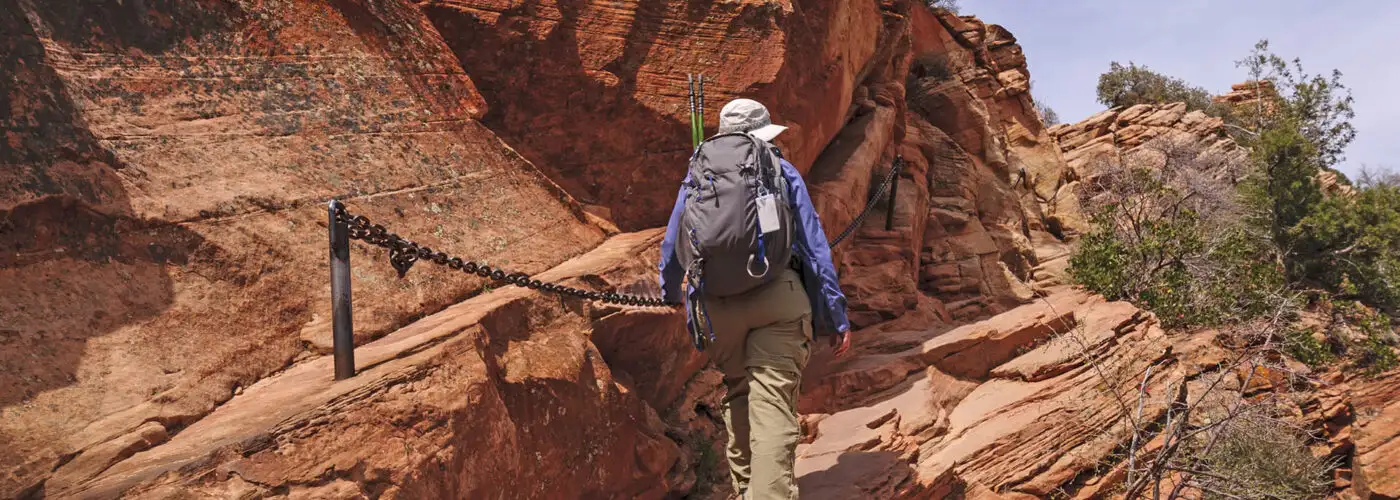National parks aren’t theme parks. There are no safety belts or security guards, no sanitized lazy rivers or glove-waving costumed creatures. But there is excitement aplenty in our nation’s wild protected parkland. Death-defying clifftop switchbacks, fuming volcanoes, and frothy waterfalls will make the most scream-inducing thrill rides seem like cherry pie. So summon your courage and head to one of these 10 pulse-quickening national park trails, where perilous paths lead to daredevil, once-in-a-lifetime adventures.
Half Dome, Yosemite National Park, California
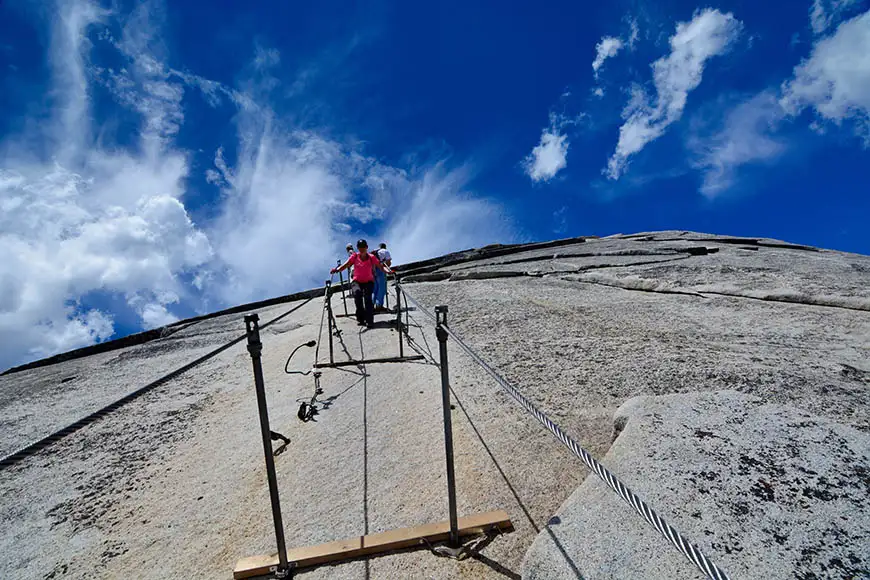
Half Dome is a curved rock that ascends almost 5,000 feet into the air, tempting fearless hikers to reach its teetering apex. You need a permit to tackle the roughly 16-mile trail, which takes about 10 to 12 hours to complete. At the end of the hike, you’ll hoist yourself up 400 feet of near-vertical rock face using metal cables in lieu of rock-climbing equipment. Once at the top, a sweet scene rewards the courageous: sweeping views of waterfalls and lush Yosemite Valley.
But hikers beware: According to the National Park Service (NPS), “Since 1919, relatively few people have fallen and died on the cables. However, injuries are not uncommon for those acting irresponsibly.”
Nankoweap Trail, Grand Canyon National Park, Arizona
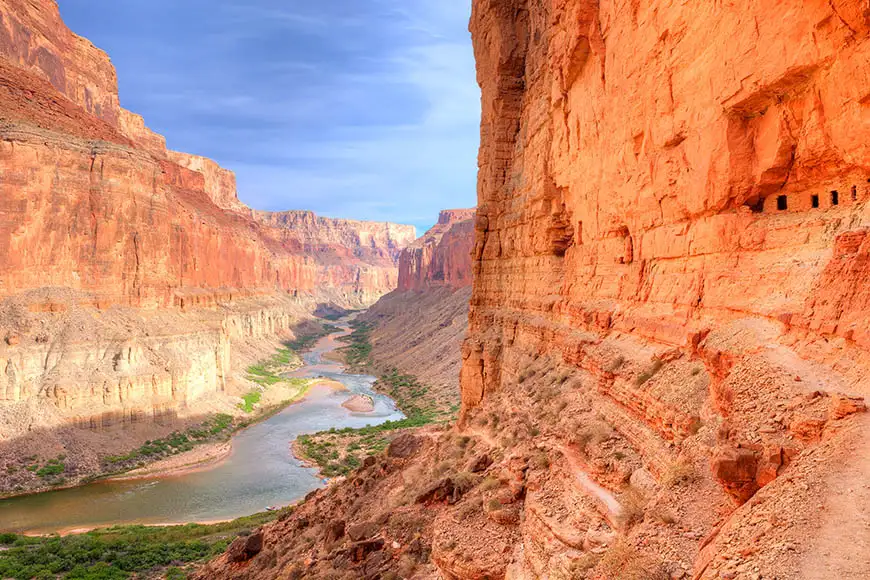
Dizzying heights and scorching temperatures are the primary hazards on the Grand Canyon’s well-trafficked trails. And the Nankoweap Trail, which the NPS classifies as one of the most difficult in the park, is no exception. The views along the way—panoramas of kaleidoscopic canyons—are unparalleled, but so are the dangers.
The Nankoweap Trail has the largest rim-to-river drop in Grand Canyon National Park, more than 5,000 feet above the Colorado River. According to the NPS, it’s the most difficult named trail in the park, and it’s “not recommended for people with a fear of heights.”
Blue Ridge Parkway, North Carolina and Virginia
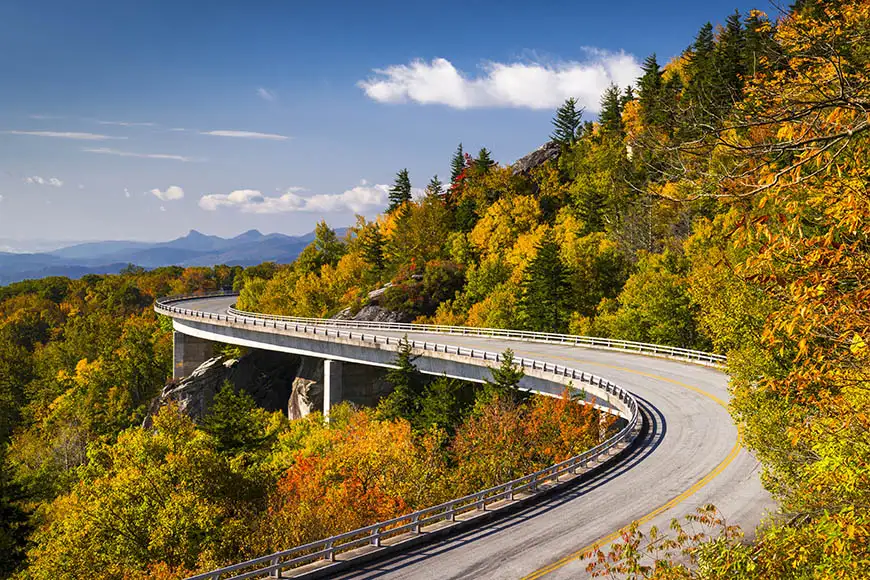
Travelers exploring national parks by car can find just as many thrills as those on foot. Just ask the millions who each year drive the Blue Ridge Parkway, one of the most visited locations in the National Park system. This scenic drive through forested mountains in the Appalachian Highlands offers opportunities for bird watching, hiking, leaf peeping in autumn, and other outdoor pursuits with or without a vehicle. But watch out for dangerous spiraling curves if traveling by car or bike. Guard rails provide only limited protection as the road twists and bends around steep mountainside drops.
Angels Landing, Zion National Park, Utah
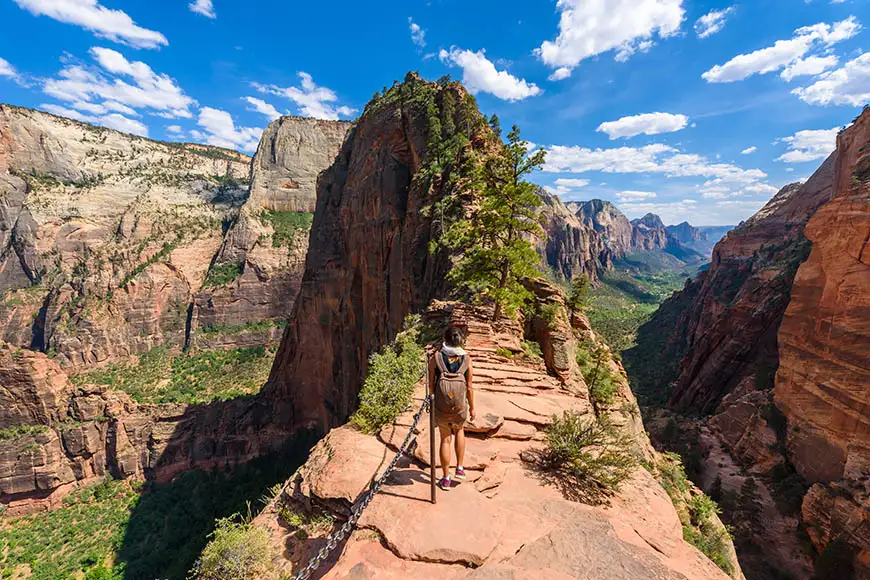
Picture yourself on top of a rock with steep drops of more than 1,000 feet to your right and left. The only thing keeping you from tumbling to either side is your tenacious grip on a skinny chain. This description fits Scout Lookout at Angels Landing, a precipitous four-hour hike in Zion National Park. After ascending a series of challenging switchbacks, gutsy hikers scale Scout Lookout, where chains guide them up narrow clifftops to the trail summit. Not sure if you can handle the heights? Take a virtual tour of the trail from the comfort of your couch on the NPS website.
Old Rag Mountain, Shenandoah National Park, Virginia
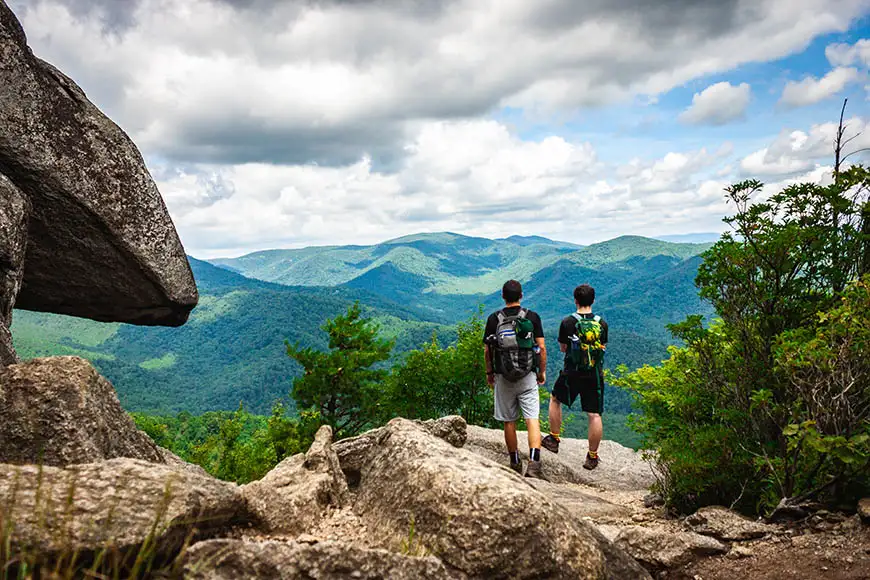
The NPS dubs Shenandoah’s Old Rag Mountain the “most popular and most dangerous hike” in the park. The nine-mile trek, which takes roughly seven or eight hours, involves a good amount of rock scrambling. In other words, trekkers must maneuver through narrow human-sized cracks in a rock face—for a mile and a half. After a lengthy shimmy through granite, hikers then approach the summit of Old Rag, where a 360-degree view of Shenandoah’s 200,000 acres awaits.
Abrams Falls, Great Smoky Mountains National Park, Tennessee
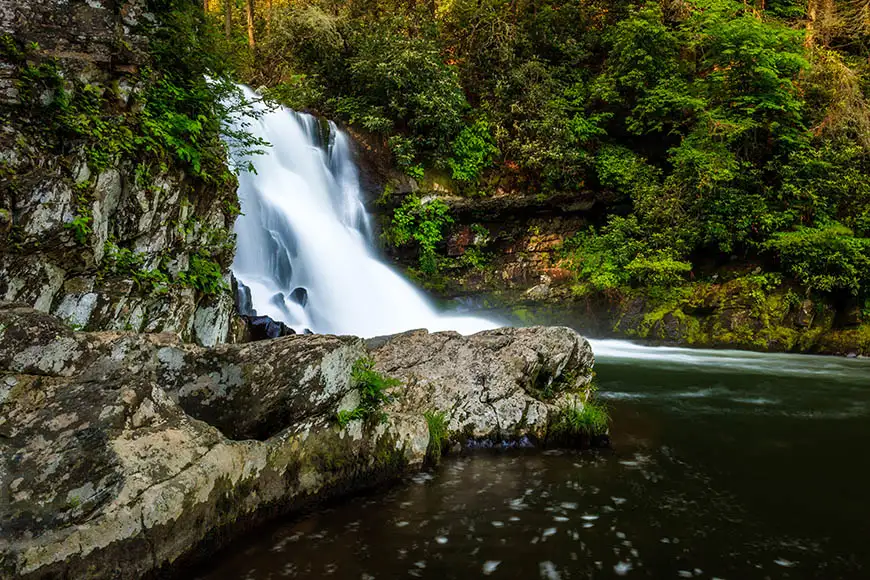
Unlike many of the trails featured here, Abrams Falls is fine for the acrophobic—but not so much for the aquaphobic. The falls themselves are just 20 feet high, and the five-mile hike there and back is only moderately strenuous. However, the falls’ powerful currents and great volume of fast-moving water are beautiful but deadly. According to the NPS, “Over the years, several people have fallen to their deaths and many others have suffered serious injuries from climbing on rocks near waterfalls or along the riverbanks.” Your best course of defense? Stay far away from the foam and check out this guide to water safety on the NPS website.
Napau Trail, Hawaii Volcanoes National Park, Hawaii
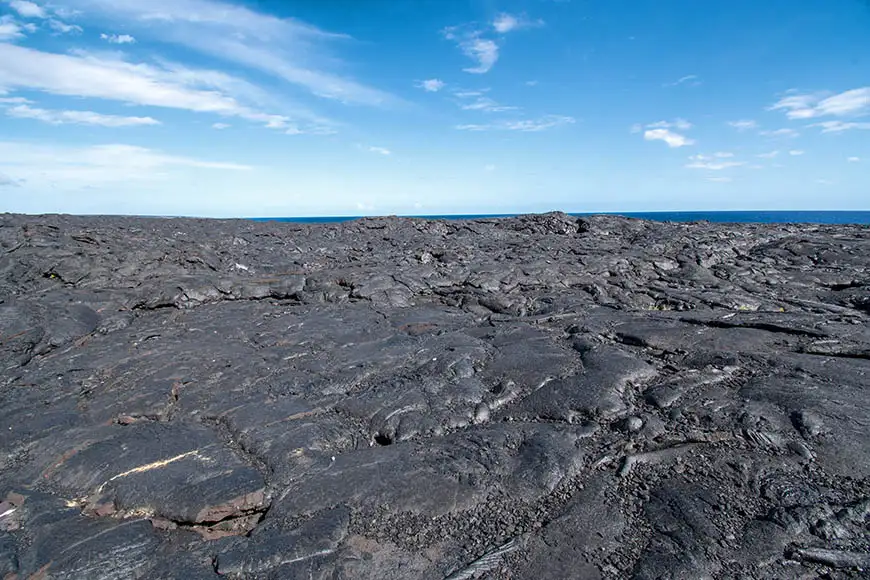
“Although Pu‘u ‘Ō‘ō stopped erupting in 2018, volcanic eruptions are possible at any time. … Earth cracks, thin crusts, and lava tubes are numerous,” says the NPS of the Napau Trail in Hawaii Volcanoes National Park. The 14-mile trail is a journey over an otherworldly lava landscape, through rainforests, past steaming vents, and around the rim of a volcanic crater. Some of the park’s perilous features include uneven lava flows and, naturally, unpredictable volcanic activity. Since it passes by Mauna Ulu, an active volcano, the Napau Trail is not always safe for trekking. But local scientists monitor Mauna Ulu for signs of eruption and park officials close the trail whenever conditions are dangerous.
Seven Mile Hole Trail, Yellowstone National Park, Wyoming
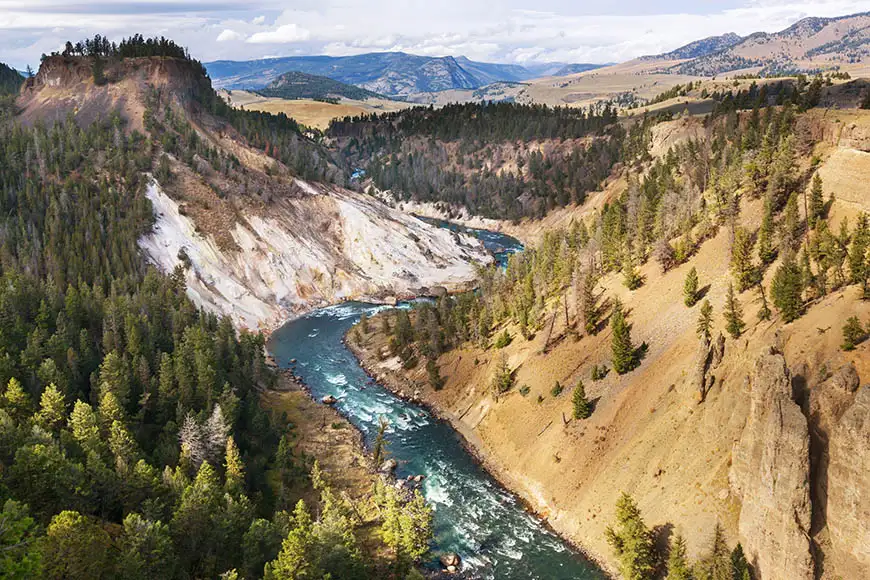
Seven Mile Hole Trail cuts across Yellowstone’s Grand Canyon, winding along the rim and through a pine forest where wild grizzlies roam. Arguably, the most difficult part of the trek is a steep one-and-a-half-mile stretch that drops 1,400 feet. (But the switchbacks aren’t exactly a picnic either.) During your hike, keep an eye out for steam vents and active hot springs. Look but don’t touch: In the past, many visitors have suffered serious burns after getting too close to the park’s piping-hot geothermic features.
Backcountry Trails, Denali National Park, Alaska
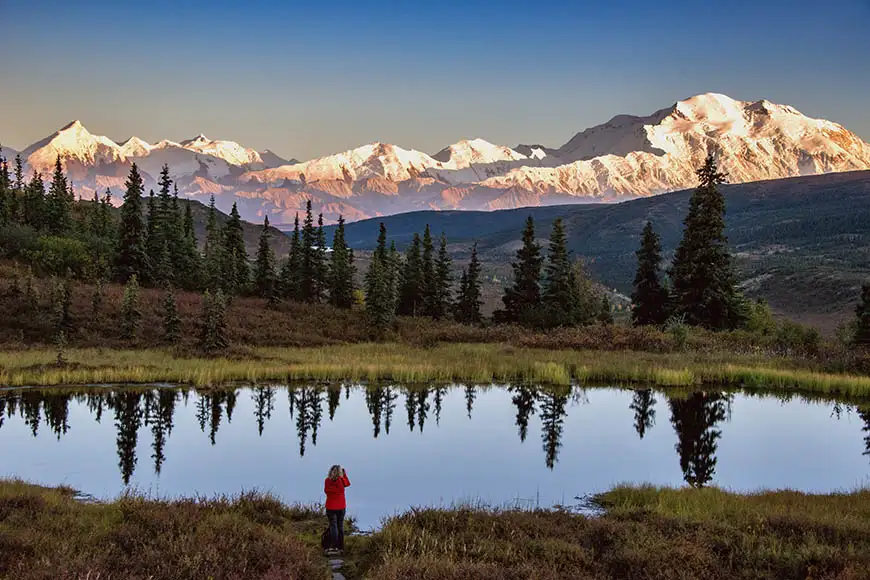
One of the most exhilarating ways to experience a national park is to go exploring in the backcountry. Travelers often need a permit to access this more isolated, trailless terrain in national parks. And in vast Denali, which is roughly the size of Massachusetts, the backcountry is about as wild and challenging as it gets. The six-million-acre park has less than 30 miles of marked trails—the rest is unadulterated wilderness.
Here, experienced mountaineers can attempt to reach the top of Denali, also known as Mount McKinley, the tallest peak on the North American continent; hikers can trek to massive glaciers; and paddlers can packraft over rough rapids and placid rivers. With little light pollution in the area, campers spending the night can glimpse a glittery star-speckled sky after the sun goes down.
Upper Yosemite Falls, Yosemite National Park, California
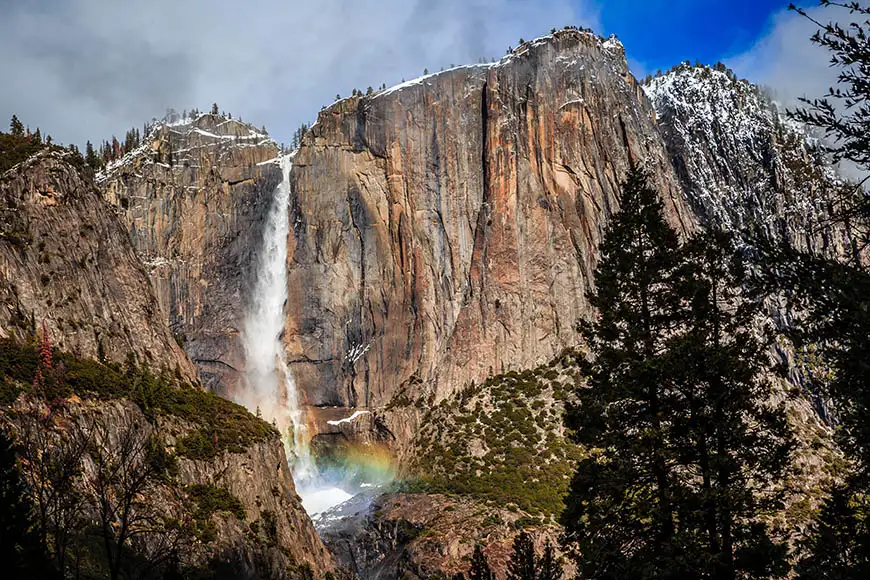
The Yosemite Falls Trail has all the hallmarks of a thrilling trail: switchbacks, rushing water, heights. It’s also historical; the trail, established in the late 19th century, is one of the oldest in Yosemite, dating back to the 1870s. The seven-mile path leads trekkers to the top of the iconic Yosemite Falls, the tallest waterfall in North America. (It takes about a day to complete.) During winter, the hike can become difficult or even impossible due to snow and ice, so it’s best to take on the trail in warmer months. Or you can explore the place from home by watching the Yosemite Falls webcam.
More from SmarterTravel:
- 10 Unforgettable Places to Sleep in National Parks
- Greater Zion: The Side of Zion That Most People Miss
- The Best National Parks in the U.S., as Recommended by Park Rangers
Editor’s note: This story was originally published in 2012. It has been updated to reflect the most current information.
We hand-pick everything we recommend and select items through testing and reviews. Some products are sent to us free of charge with no incentive to offer a favorable review. We offer our unbiased opinions and do not accept compensation to review products. All items are in stock and prices are accurate at the time of publication. If you buy something through our links, we may earn a commission.
Related
Top Fares From
Today's Top Travel Deals
Brought to you by ShermansTravel
Shop and Save with Country Inns...
Patricia Magaña
 Hotel & Lodging Deals
Hotel & Lodging Deals
$229 -- Chicago: Discounted Rates and...
Francesca Miele
 Hotel & Lodging Deals
$229+
Hotel & Lodging Deals
$229+
$188 -- Honolulu: Save on Oceanview...
Abigail Lamay
 Hotel & Lodging Deals
$188+
Hotel & Lodging Deals
$188+
